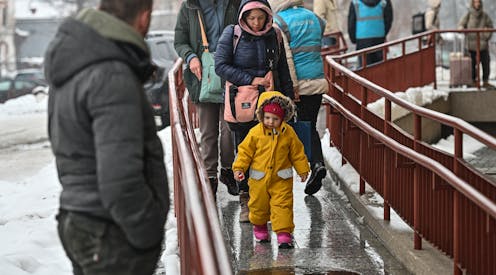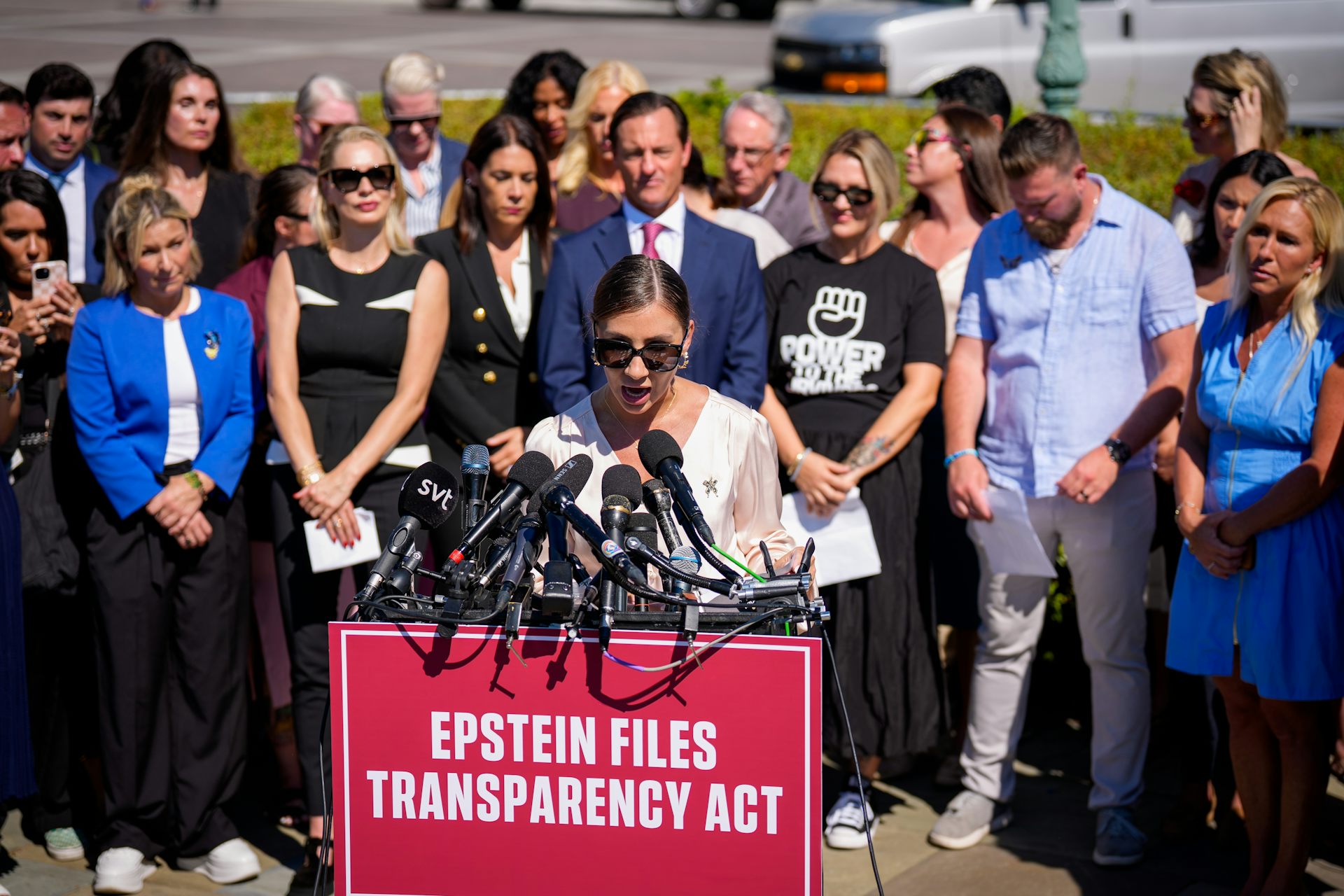Poland’s hospitality is helping many Ukrainian refugees thrive – 5 takeaways
About 1.5 million refugees are still there, with some putting down roots.

More than 8 million Ukrainian refugees have entered Poland since Russia’s February 2022 invasion. About 1.5 million of them have remained in the central European country rather than moving on to other places or returning home amid Europe’s biggest refugee crisis since World War II.
So far, Polish citizens have demonstrated incredible solidarity and generosity, in many cases hosting Ukrainian refugees in their own homes. Many Poles told me that they appreciated President Biden’s visit to Warsaw in February 2023 and his acknowledgment of their work and sacrifices. But the end of the war is still not in sight.
I am a scholar of civil society and peace building who is spending six months in Poland to research the country’s response to this influx of refugees. Here are five takeaways from what I’ve learned.
1. Volunteers have mobilized on a vast scale
Particularly in the earliest days of this mass displacement, when no international refugee aid organizations were operating yet in Poland and while the Polish government was still organizing its own support programs and policies, Polish people and local nonprofits did most of the work.
By all accounts, the scale, nature and reliability of these volunteer efforts have been unprecedented. Within the first three months of the war, over 70% of Polish citizens had provided some kind of assistance, whether it was food, clothing or money.
According to the Polish Economic Institute, Polish citizens provided about US$1 billion in cash, goods or both.
More than half have donated money or goods, about 20% helped refugees sort out various issues, 17% volunteered on a regular basis and 7% said they had made their homes available to one or more refugees. In a [July 2022 survey] more than half of respondents declared that they or someone in their household regularly helps Ukrainian refugees in some way.
The Polish government estimates that Polish families have hosted 1.6 million Ukrainian refugees in their homes at some point since the invasion.
2. Societies can become more welcoming
As recently as 2021, most Poles were so determined to keep all refugees out that one poll indicated almost half of the country in 2021 supported building a wall on the country’s eastern border to block their entry. Surveys published in August 2022 indicated that the share of Poles who support Polish aid for Ukrainians had decreased from 94% immediately after the start of the Russian invasion to 84%. But that still meant the vast majority supported Poland accepting Ukrainian refugees and providing support for them.
Scores of new Polish initiatives have sprung up to provide Ukrainian refugees with short-term assistance or to work with members of the Ukrainian diaspora on long-term development in both Poland and Ukraine, like Polish Humanitarian Action.
Some of these initiatives, like Homo Faber, a human rights group, and the Foundation for Women and Family Planning, a nongovernmental organization that protects reproductive health and women rights, are supplementing Poland’s safety net while also promoting solidarity between Poles and Ukrainians and integrating newcomers for a potentially long-term stay.
Two of the largest groups – the Polish Medical Mission and the Center for Civic Education – provide legal aid and counseling services for all Ukrainian refugees and assist Ukrainian refugees with special needs. Given that nearly 80% of Ukrainian refugees in Poland indicated in July that they planned to remain there until the situation in Ukraine improves, these organizations, as well as more informal grassroots initiatives, are signs of a society that has become more welcoming to at least some outsiders.

3. Poland’s divided government is getting some hard things done
When Ukrainians began to arrive in Poland in big numbers, the Polish government stepped up. The federal government’s Act on Aid for Ukrainian citizens, passed in March 2022, was extensive.
It gave Ukrainian refugees many benefits, including the right to live in Poland, work legally and receive many of the government benefits available to Poles, like free health care.
Although the country is deeply divided politically, local governments led by mayors who belong to parties that oppose the federal government’s Law and Justice Party followed through on the directives of the federal government without pushback. And jurisdictions led by different political parties established and sustained 36 support centers to provide ongoing aid and information to refugees. Poland spent more than $8.8 billion on supporting refugees from Ukraine in 2022 – more than any other member of the Organization for Economic Cooperation and Development, a group of 38 largely high-income nations.
Educating Ukrainians has been a high priority for Polish political leaders. More than 200,000 Ukrainian children are already in Polish schools, more are going to university for free, and many more adults are taking free Polish language classes. By May 2022, about 5,700 Ukrainians had applied to Polish universities, and Polish universities have pledged to provide those who are accepted with financial aid, as well as free tuition.
4. Some Ukrainian refugees are putting down roots
Although they have had to leave their homes and give up their livelihoods, many Ukrainian refugees are adjusting to life in Poland.
Since Polish and Ukrainian are similar Slavic languages, most of the Ukrainian refugees I’ve encountered in Poland have already learned to communicate well in Polish, with children outpacing their parents. Between 60% and 70% of Ukrainian adult refugees are already working, even though most professionals are not able to use their full educational backgrounds in these positions. Instead, most of the refugees are working in the service industry or in factories.
Some Ukrainians are putting down roots, joining the more than 1.3 million Ukrainians who had already settled in Poland before the war. And in 2022, Ukrainians registered 20,000 new businesses in Poland.
I think it’s reasonable to say that Ukrainians are not just surviving, they are thriving.
5. There are limits to Poland’s generosity
In the summer of 2022, the Polish federal government ended its subsidies for Polish families supporting Ukrainian refugees in their homes.
In February 2023, some shelters decided that they needed to charge refugees room and board. City governments, private foundations and generous individuals continue to provide these refugees with support. But funds are depleting and assistance is waning for Ukrainian refugees – and not only in Poland.
Ukrainians are no doubt helping Poland’s economy grow. In 2022, the country’s gross domestic product expanded by 4.9%. And this immigration surge has reduced the country’s labor shortage. But inflation is at a 25-year high. It stood at 15.3% in December 2022, much higher than the European Union’s average of 10.4%.
Like other European countries, Poland has faced soaring energy prices, especially after Russia cut off natural gas exports to Poland in April 2022. In December 2022, energy prices were almost 37% higher than a year earlier.
Even before Ukrainians arrived, Poland faced a housing shortage. Depending on how long Ukrainians stay, Poland could need at least 200,000 new apartments and probably even more dwellings to house them, according to a new report.
In short, 2022 was a challenging year for Poland. But I see many reasons for cautious optimism that Poland is managing Europe’s biggest refugee crisis since World War II well.
Patrice McMahon receives funding for her work in Poland from the U.S Department of State through the Fulbright Program.
Read These Next
Where the wild things thrive: Finding and protecting nature’s climate change safe havens
Protecting places that are likely to remain cool and moist as global temperatures rise can save wildlife…
Unpaid caregiving work can feel small and personal, but that doesn’t take away its ethical value
Debating whether to step back from a career to take on caregiving responsibilities can be a tough decision…
The #iwasfifteen hashtag and ongoing Epstein coverage show how traffickers exploit the vulnerabiliti
The conversation around #iwasfifteen sheds light on the dynamics of abusive relationships and the experiences…





